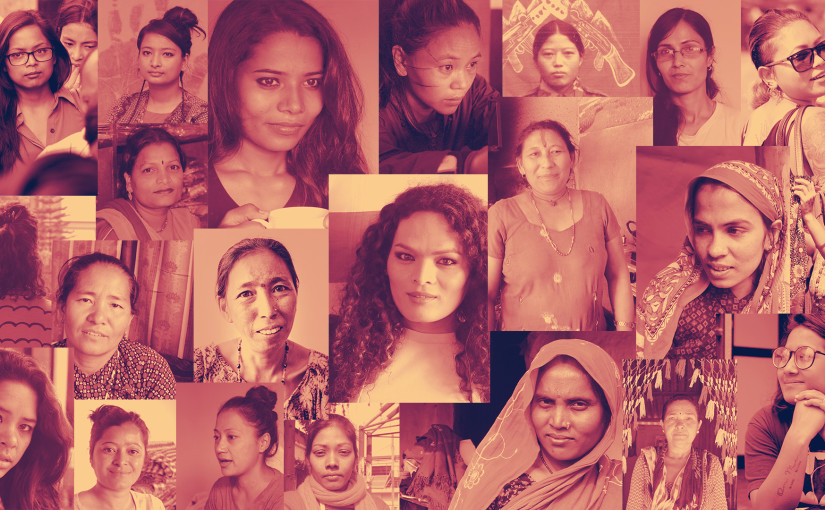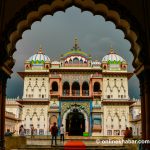Every time Pooja Pant read stories about women in newspapers, all she saw was how these stories had the same narrative. A woman who survived an incident was either shown sympathy or pity. Despite overcoming something drastic in their lives, these women were usually seen from the same lens and that irked her.
“I always wondered why they didn’t write about women who overcame adversities and showed strength. That is when I and a colleague decided we could start something that could give a voice to women from the margins,” says Pant, who is the co-director of Voice of Women Media, also known as VOW Media.
That is what gave birth to She is the Story, a social campaign that aims to feature women who have switched their roles from silent to vocal. Through the campaign, VOW Media wants the women to tell their own stories as they believe that every story holds a complicated reality that only those who have lived it can tell.
Similar yet different stories
“She tells her story, just the way she experiences them and not how they are supposed to be told. Through She is the Story, we attempt to assist in unveiling her role in our history and creating her very own narrative,” says Pant.
This year, She is the Story is back again with a series of 12 compelling stories about women ranging from politics, sports and social oppression that will be released from July 1 onwards.
“We have 12 storytellers telling these stories of women from all over Nepal. These come through the lenses of journalists, filmmakers and activists. Even though we haven’t been able to include all women’s issues, we have covered a lot of them,” says Pant.
Stories from the grassroots
But, things were not like this. During the initial years of She is the Story, Pant and her colleagues themselves went out to collect stories. As funds were limited, they mostly collected stories about women from around Kathmandu. Pant says their intentions were clear from the start as they spoke to women who sold corns, vegetables and bangles and posted them on their website and also published a book.
Take the example of Babita Das, an owner of a clothes shop in Asan. Her story is that of adversity. Getting married off at an early age, she never really understood the importance of education. Yet there she is, taking care of a shop selling clothes despite not having known simple math.
“I realised the importance of education as I started a business. I have to rely on my staff for almost everything,” she said when VOW Media interviewed her for She is the Story in 2016.
They told stories of similar women, who despite hardships, still showed strength and carried on in their lives. One such story is of Ashma Aryal who despite being visually impaired, never let it affect her as she has gone on to do things she has always wanted to do.
“These are the stories that aren’t told. I feel stories like these inspire people in different ways. We want to show people that even in the darkest of times, there is light,” says Pant.
Getting bigger and better
As years went by, they wanted to expand She is the Story. Slowly support started coming in and they started venturing out. They started asking people close to them who were travelling away from the valley to get stories for them. And this year, they decided to use female journalists, activists and filmmakers to share people’s stories.
“We called in an application and chose 12 people to tell 12 stories. These range from sports to social oppression. Some even came to us saying they wanted to do a story about a person whose story they felt should be shared,” says Pant.
One of them was journalist Sushma Baraili who has prepared a five-minute video about Karnali Provincial assembly member Jhowa BK for She is the Story this year.
“In 2020, she was ridiculed for not knowing Nepali despite being a politician. Her being illiterate was also made fun of by people, but no one had told her side of the story,” says Baraili.
Baraili, who reports on politics, felt her story was important and when she approach BK, the Karnali Provincial Assembly member was more than happy to share her story.
“She was so happy that someone from Kathmandu had come to talk to her. Hers is a story of courage because it takes a lot to tell the country that you are not educated. Because of that, there were calls for her to quit too,” says Baraili.
So in the She is the Story video, Baraili has tried to show how a woman, that too from the Dalit community, faced constant discrimination due to language and how she overcame that and continued to serve as a lawmaker.
Campaigning for a change
Pant says these were the stories that they wanted to bring out via She is the Story. As most journalists are assigned to write victim-centric stories, they wanted to highlight strengths too.
“There’s more to it than just pity,” she says as she hopes newsrooms across the country become more alert on these issues and ask reporters to cover stories that highlight women’s strengths too.
Filmmaker Shanta Nepali is also a part of this project and has done a story about how hard it is for women, especially ones from the Dalit community, to find rooms in Kathmandu.
“People have refused to give me a room here because I’m a single woman. It’s worse when it comes to Dalit women,” she says. “For She is the Story, I’ve interviewed people from different walks of life who share what people tell them when they try to let a room in the capital city.”
When asked if initiatives like this will help create change, the women involved in the project are not as hopeful because they feel it will take a long time for things to change.
“People’s mindset needs to change for things to change. It’s not going to happen tomorrow, but we hope initiatives like She is the Story will help the society in the long run,” says Pant.





















